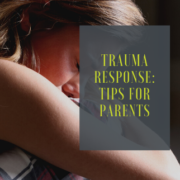Homework Time Made Easier
Homework is simply a fact of life for today’s students. As early as kindergarten, children are bringing homework home from school. While homework has its many benefits, the majority of students would rather forget about the additional practices, projects, and papers. With such an aversion, homework time at home can be a real battle. Yet, it does not have to be. There are many tried-and-true strategies when it comes to alleviating the stress of homework.
Here are some of our favorites.
First and foremost, a key to easing homework stress is to make sure that the homework actually makes it home. Depending on your child’s age, it may be a struggle to simply keep track of the many worksheets that need to travel to and from school. Keeping your child’s work organized can make all the difference when sitting down to work. Try using a homework folder designated for nightly assignments. Use color-coded tabs or sticky notes to manage daily assignments and due dates. Staying organized is a significant start to managing the homework routine.
Set a Schedule
Set expectations by creating a homework schedule. Between the many afterschool activities and busy schedules that each family undoubtedly juggles, homework may become an afterthought. Make sure that your child knows when and where he or she should be completing homework each night. Set limits on the use of technology during homework time. Cell phones, television, and other distractions can make homework completion impossible, so it is best that these things remain off limits until homework is completed.
Break It Down
When homework has mounted to a seemingly unmanageable level, break the assignments down to avoid a mental meltdown. Especially during the middle and high school years, the amount of homework assignments can increase greatly. Staring down a mountain of papers can stress out both you and your child. If your child is unable to chunk the assignments into manageable pieces, help them out by creating an “order of importance” list. Arrange the work into a schedule based on difficulty and due date. This way, you and your child can prioritize the homework and alleviate any stress from the many assignments.
Promote Practice, Not Perfection
When it comes to difficult assignments, emphasize the importance of effort and completion, not necessarily perfection or 100% correctness. When homework becomes a frustrating tear-session for your child, explain that homework is meant to be practice. Too often, students stress over the need to answer questions and submit flawless assignments. Yes, that is the eventual goal, but homework is meant to provide practice—not display perfection. In fact, most homework assignments are intended to show the teacher whether or not students understood the content. Teachers also use homework assignments as a way to gauge the pacing of lessons or content. So, when the tears start welling, remind your child that homework is for practice.












